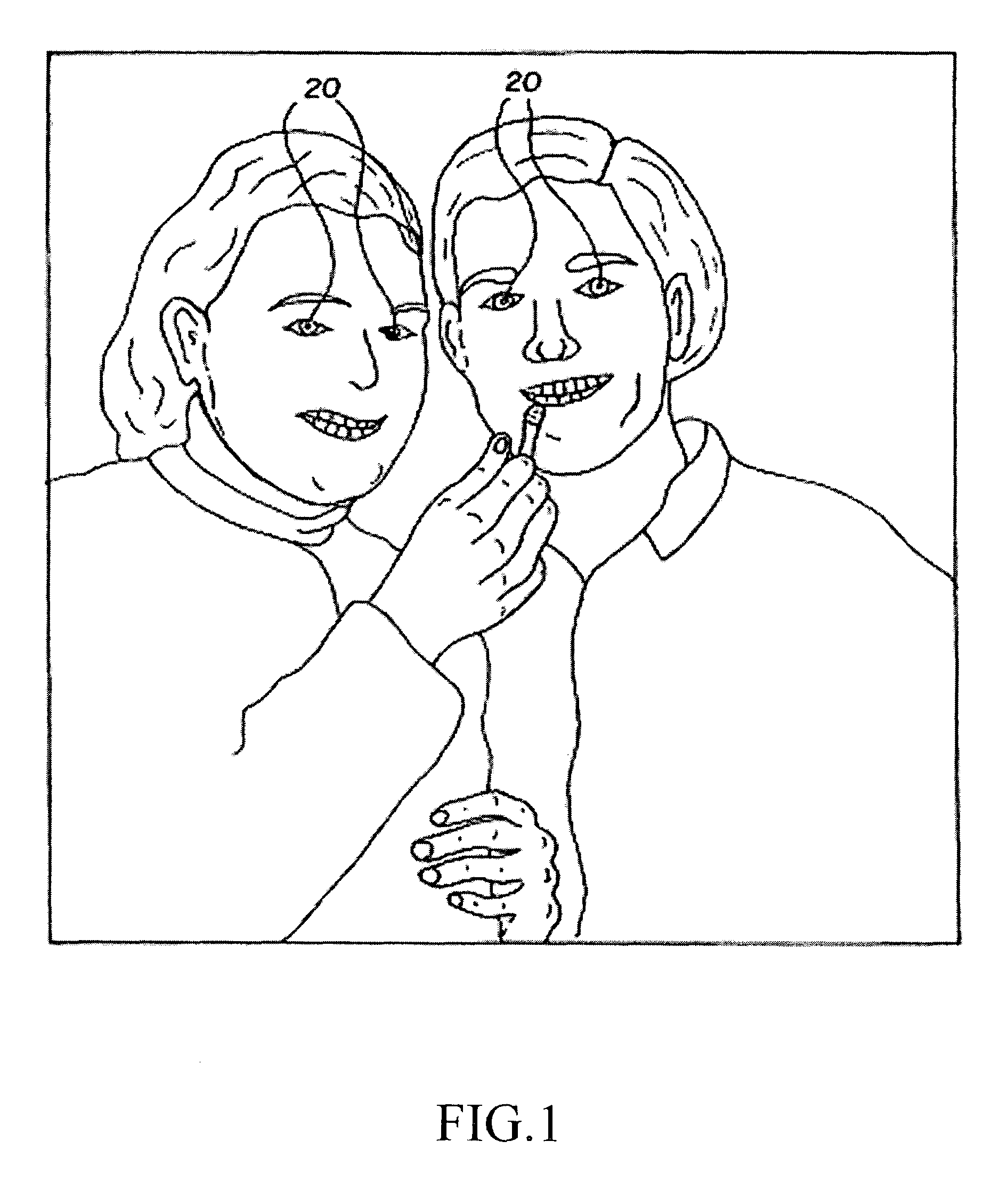Method of processing red eye in digital images
a technology of digital images and red eyes, applied in image enhancement, image analysis, instruments, etc., can solve the problems of insufficient red eye detection, limited technique, and even more severe red eye problems in digital images, and achieve the effect of automatically eliminating the red eye effect and high precision in the localization of red eyes
- Summary
- Abstract
- Description
- Claims
- Application Information
AI Technical Summary
Benefits of technology
Problems solved by technology
Method used
Image
Examples
second embodiment
[0025]The flowchart of FIG. 4 schematically illustrates a method of processing red eye in a digital image according to the invention. First, a skin color area of the image is detected (step 410). The skin color area is typically determined from the range of HIS parameters. Then a visage area is localized in the skin color area (step 420). In an image, the visage area is the largest area of a skin color area. To determine the visage area, the number of pixels and the number of pixel rows in the skin color area are evaluated: if the skin color area has a number of pixels greater than a pixel number reference and a number of pixel rows greater than a row number reference, the corresponding closed area is considered as a visage area. Usually, a visage area has a number of pixels greater than 5000, and a number of pixel rows greater than 100. Once the visage area has been determined, other skin color area with fewer pixels such as the arms can be filtered out, and the red eye then is sea...
third embodiment
[0026]The flowchart of FIG. 5 schematically illustrates the invention. First, a skin color area is detected in the image (step 510). A skin color area is typically determined from the range of HIS parameters. Subsequently, all inner boundaries in the skin color area are picked up (step 430).Inner boundary determination can be performed by evaluating the gray scale gradients of a gray scale image in the same manner as described above. Alternatively, a peripheral edge detection technique can be used to determine the inner boundaries of the skin color area. Then, the inner boundaries of the skin color area matching eyelid quadratic curves are determined. In particular, the eyelid quadratic curves are expressed as follows: Y=aX2+bX+c, wherein if 0.01530).
[0027]The eyelid area includes an iris area, which corresponds to the colored annular periphery of the eye pupil. The iris area has the function of adjusting the pupil size, and is the visible annular portion between the pupil and the s...
fourth embodiment
[0028]The flowchart of FIG. 6 schematically illustrates the invention. First, a skin color area is detected in the image (step 610). Then the visage area is detected in the skin color area (step 620). All inner boundaries in the visage area are subsequently detected (step 630). The inner boundaries of the visage area are matched with the eyelid quadratic curve to determine the proper upper and lower eyelid quadratic curves. Horizontal coordinate error between the respective apexes of the matched quadratic curves is then evaluated; if the apex horizontal coordinate error is smaller than an apex reference value, the area enclosed by the eyelid quadratic curves is considered an eyelid area (step 640). In this embodiment, the apex reference value is, for example, 4. Subsequently, the inner boundaries of the eyelid area are matched with the iris quadratic curve to determine the iris area (step 650). Lastly, red pixels in the iris area are localized and filled up (step 660). Incorporating...
PUM
 Login to View More
Login to View More Abstract
Description
Claims
Application Information
 Login to View More
Login to View More - R&D
- Intellectual Property
- Life Sciences
- Materials
- Tech Scout
- Unparalleled Data Quality
- Higher Quality Content
- 60% Fewer Hallucinations
Browse by: Latest US Patents, China's latest patents, Technical Efficacy Thesaurus, Application Domain, Technology Topic, Popular Technical Reports.
© 2025 PatSnap. All rights reserved.Legal|Privacy policy|Modern Slavery Act Transparency Statement|Sitemap|About US| Contact US: help@patsnap.com



